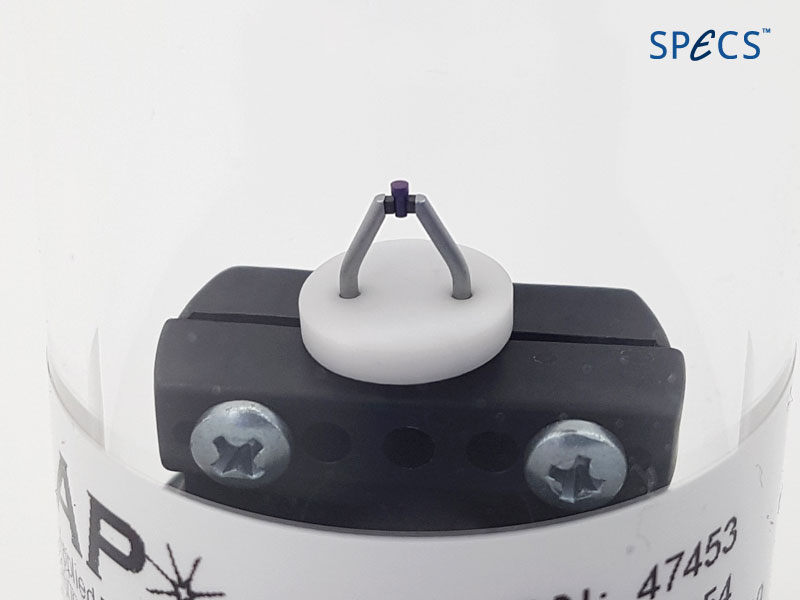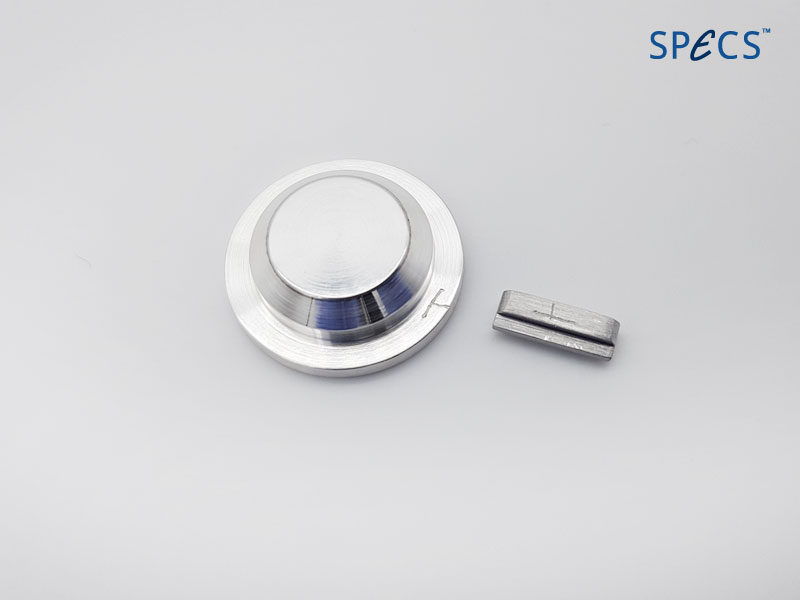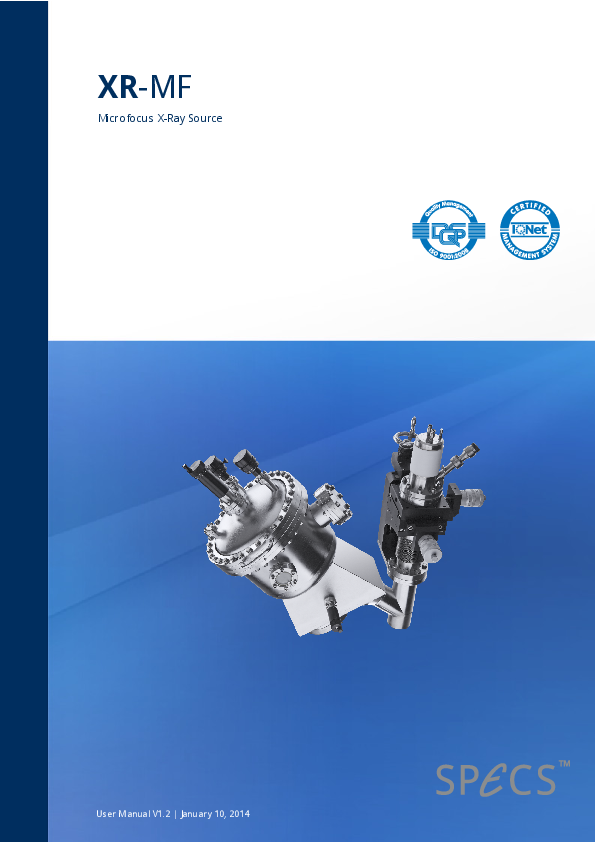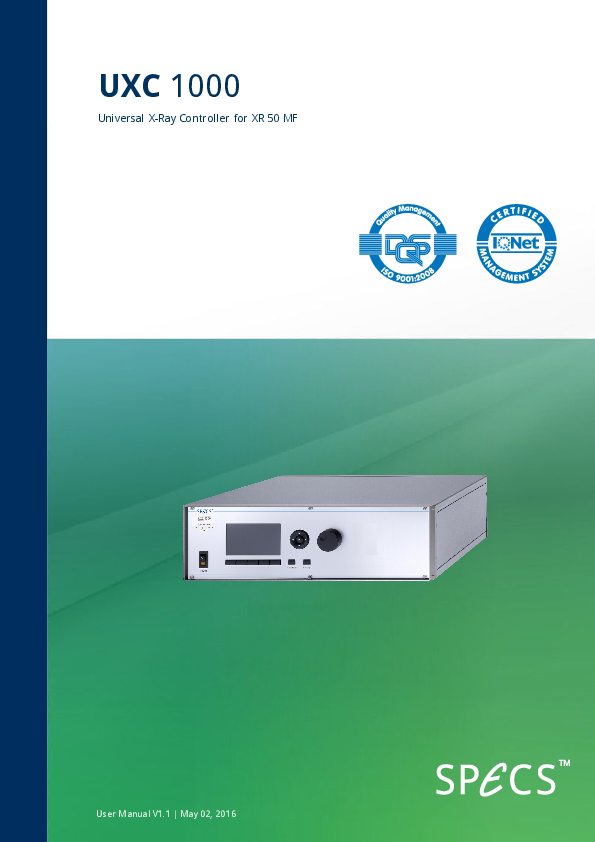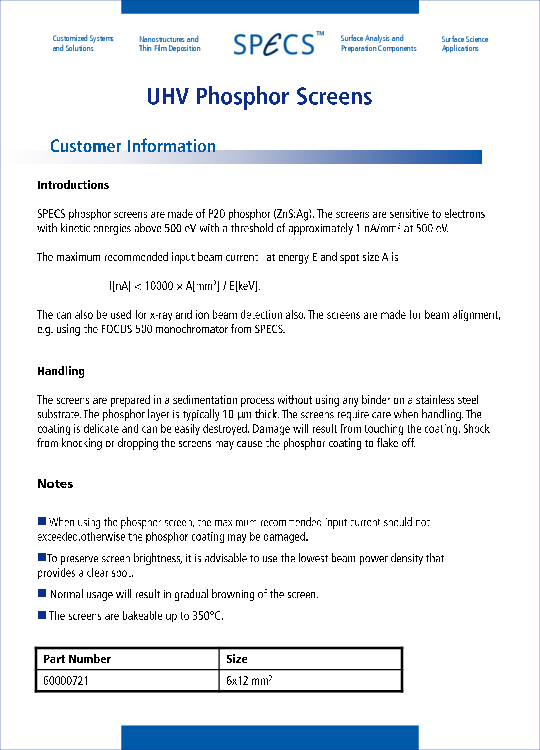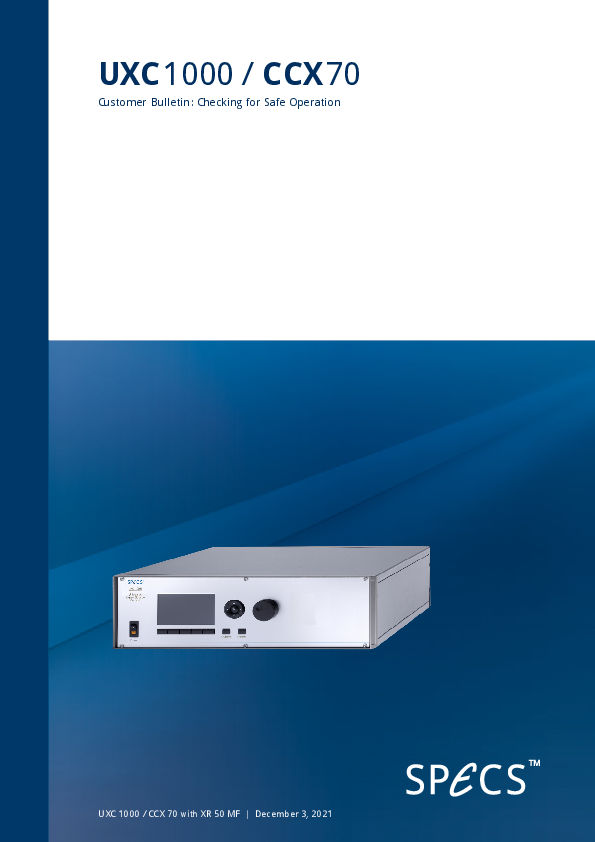 Detail
DetailµFOCUS 500/600
High Performance Small-Spot Monochromatic X-Ray Source
The small spot monochromator µFOCUS 500/600 operates according to Bragg´s Law of X-ray diffraction. A single wavelength of X-rays is reflected from a quartz single crystal mirror at a specific angle of reflection. The mirror has a 500 mm Rowland circle diameter for µFOCUS 500 and 600 mm for µFOCUS 600, respectively. Due to its overall compactness, the µFOCUS 500/600 is suitable for mounting on almost any analysis chambers as a bolt-on component. The port length for µFOCUS 500 is 177 mm, while for µ-FOCUS 600 model is 254 mm. A moveable aluminized polymer window (shutter) is provided on the monochromator housing for differential pumping or to shield the crystal assembly during sputtering.
The µFOCUS 500/600 monchromator is equipped with microfocus high performance X-ray source XR 50 MF which is specially designed for the use with the monochromator. This small spot source is equipped with Al anode. The µFOCUS 500/600 monochromator togeher with the XR 50 MF microfocus X-ray source is perfectly suited for small spot, high resolution and high intensity XPS measurements.
SPECIFICATIONS
| Maximum Anode Voltage | 15 kV |
| Working Conditions | UHV |
| Required Accessories | CCX 70 Isolation Unit Closed-Cycle Water Cooling System |
| Monochromated | Yes |
| Power | <180W for Al anode |
| Anode Materials Available | Al anode (1486.7 eV) |
| Power Supply | UXC 1000 Universal X-Ray Source Control |
| Mounting Flange | DN100 CF |
| Insertion Depth | n.a. max. chamber port length for µFOCUS 500: 177 mm max. chamber port length for µFOCUS 600: 254 mm |
| Rowland Cirlce Diameter | 500 mm for µFOCUS 500 |
| Spot Size | < 200 µm to > 1 mm |
| Photon Flux | up to 2x1010 photons/s for Al |


